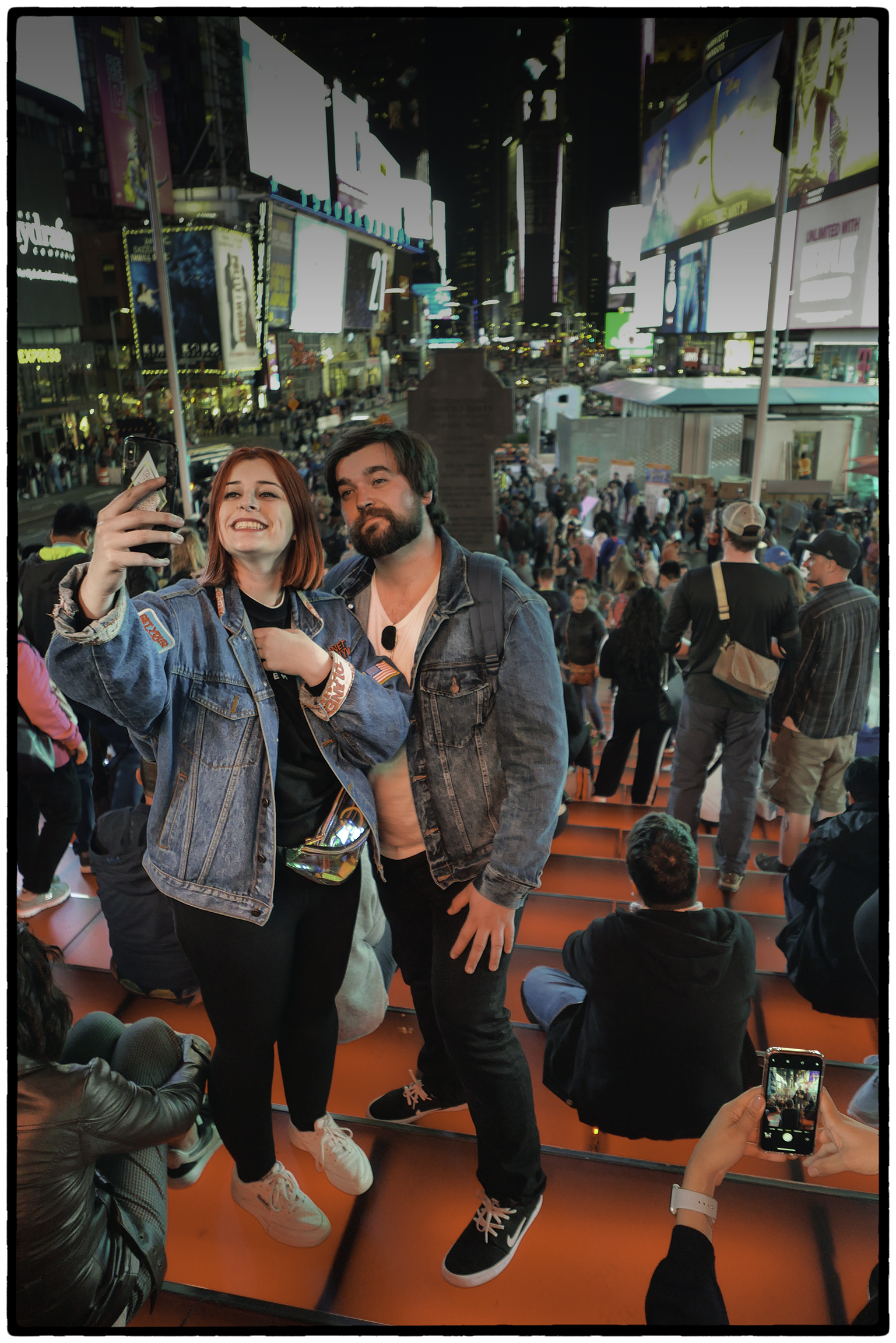



People dress up in costume and run to be in tourists’ photographs…for money, of course.








We’re on a Roll




Amish Girls at 9/11 Memorial

Two fountains occupy the footprints of the World Trade Center. Around the fountains are the engraved names of those who died.

Waiting to be called to enter the store to plunk down $200 on a new pair of Nike Travis Scott 31s.







Metropolitan Museum of Art

Jaume Plensa, Behind the Walls, 2019










“Pickett's Charge was the culmination of the Battle of Gettysburg. Taking place on July 3, 1863, the third and final day of battle, it involved an infantry assault of approximately 15,000 Confederate soldiers against Union Major General George Meade's troops' position along Cemetery Ridge, manned by some 6,500 Federals. “ History.net

From Little Round Top. “During the second day of the Battle of Gettysburg (July 2, 1863) Confederate Gen. Robert E. Lee attempted to capitalize on his first day's success. He launched the Army of Northern Virginia in multiple attacks on the flanks of the Union Army of the Potomac, commanded by Maj. Gen. George G. Meade. The assaults were unsuccessful, and resulted in heavy casualties for both sides.” Over 4000 dead in one day.







A family assumes MLK’s pose.

A viewer with an editorial comment.


“In October 1859, Brown led a raid on the federal armory at Harpers Ferry, Virginia (today West Virginia), intending to start a slave liberation movement that would spread south through the mountainous regions of Virginia and North Carolina; there was a draft constitution for the state he hoped to establish. He seized the armory, but seven people were killed, and ten or more were injured. He intended to arm slaves with weapons from the arsenal, but only a small number of local slaves joined his revolt. Within 36 hours, those of Brown's men who had not fled were killed or captured by local farmers, militiamen, and US Marines, the latter led by Robert E. Lee. He was hastily tried for treason against the Commonwealth of Virginia, the murder of five men (including three blacks), and inciting a slave insurrection; he was found guilty on all counts and was hanged. He was the first person convicted of treason in the history of the country.” Wikipedia















































People dress up in costume and run to be in tourists’ photographs…for money, of course.
We’re on a Roll
Amish Girls at 9/11 Memorial
Two fountains occupy the footprints of the World Trade Center. Around the fountains are the engraved names of those who died.
Waiting to be called to enter the store to plunk down $200 on a new pair of Nike Travis Scott 31s.
Metropolitan Museum of Art
Jaume Plensa, Behind the Walls, 2019
“Pickett's Charge was the culmination of the Battle of Gettysburg. Taking place on July 3, 1863, the third and final day of battle, it involved an infantry assault of approximately 15,000 Confederate soldiers against Union Major General George Meade's troops' position along Cemetery Ridge, manned by some 6,500 Federals. “ History.net
From Little Round Top. “During the second day of the Battle of Gettysburg (July 2, 1863) Confederate Gen. Robert E. Lee attempted to capitalize on his first day's success. He launched the Army of Northern Virginia in multiple attacks on the flanks of the Union Army of the Potomac, commanded by Maj. Gen. George G. Meade. The assaults were unsuccessful, and resulted in heavy casualties for both sides.” Over 4000 dead in one day.
A family assumes MLK’s pose.
A viewer with an editorial comment.
“In October 1859, Brown led a raid on the federal armory at Harpers Ferry, Virginia (today West Virginia), intending to start a slave liberation movement that would spread south through the mountainous regions of Virginia and North Carolina; there was a draft constitution for the state he hoped to establish. He seized the armory, but seven people were killed, and ten or more were injured. He intended to arm slaves with weapons from the arsenal, but only a small number of local slaves joined his revolt. Within 36 hours, those of Brown's men who had not fled were killed or captured by local farmers, militiamen, and US Marines, the latter led by Robert E. Lee. He was hastily tried for treason against the Commonwealth of Virginia, the murder of five men (including three blacks), and inciting a slave insurrection; he was found guilty on all counts and was hanged. He was the first person convicted of treason in the history of the country.” Wikipedia